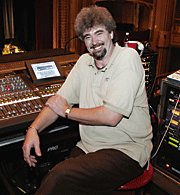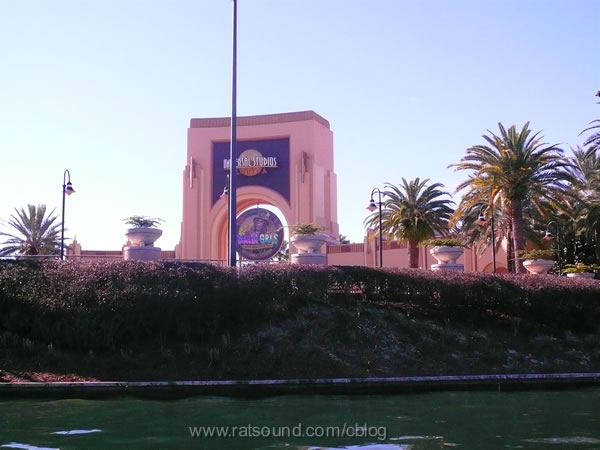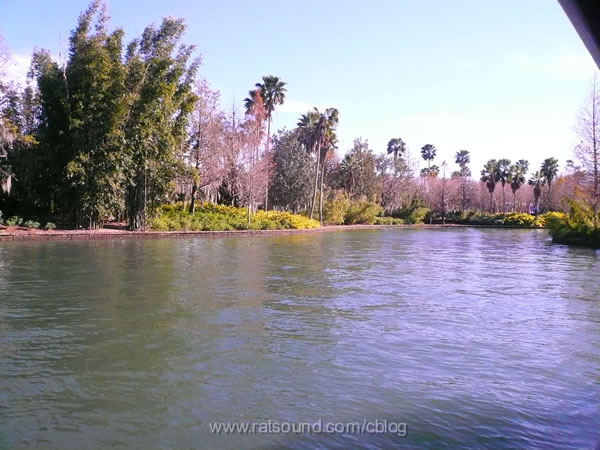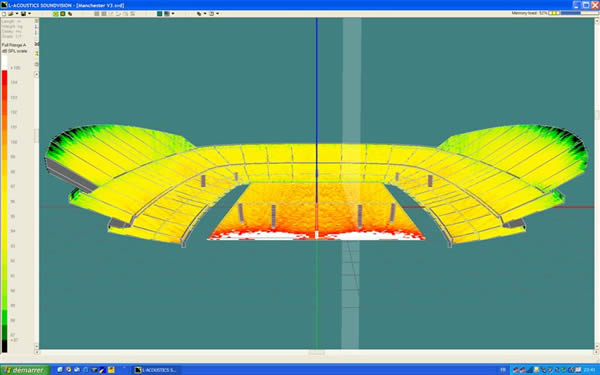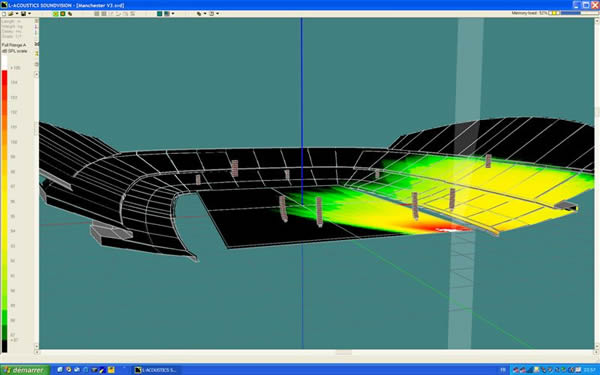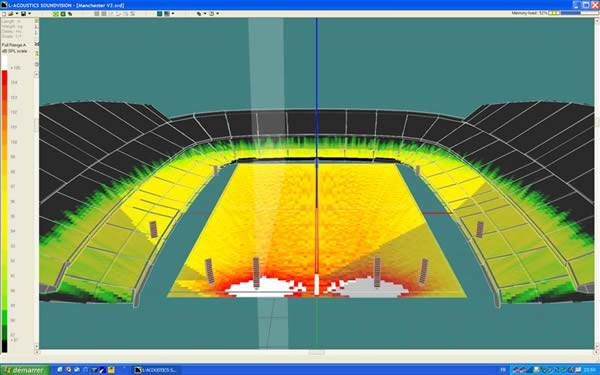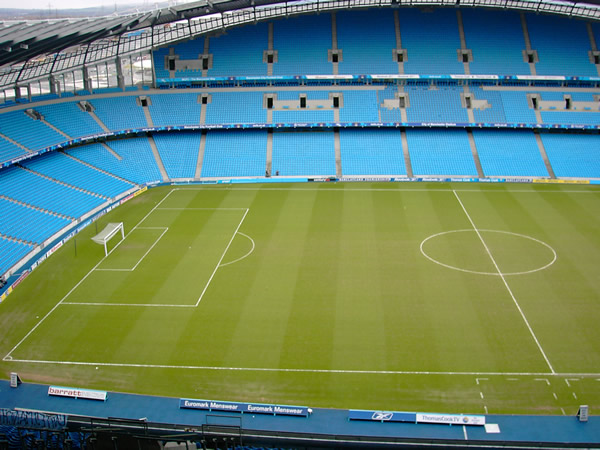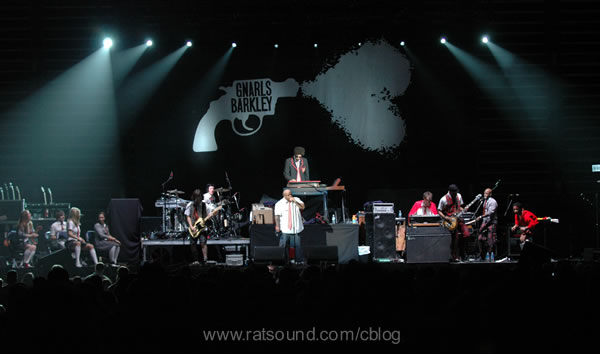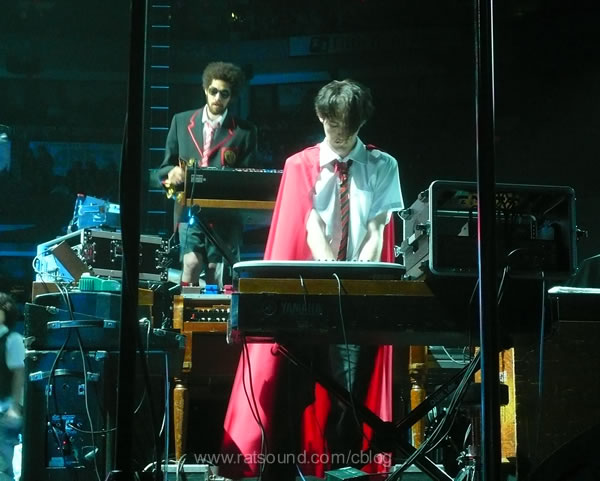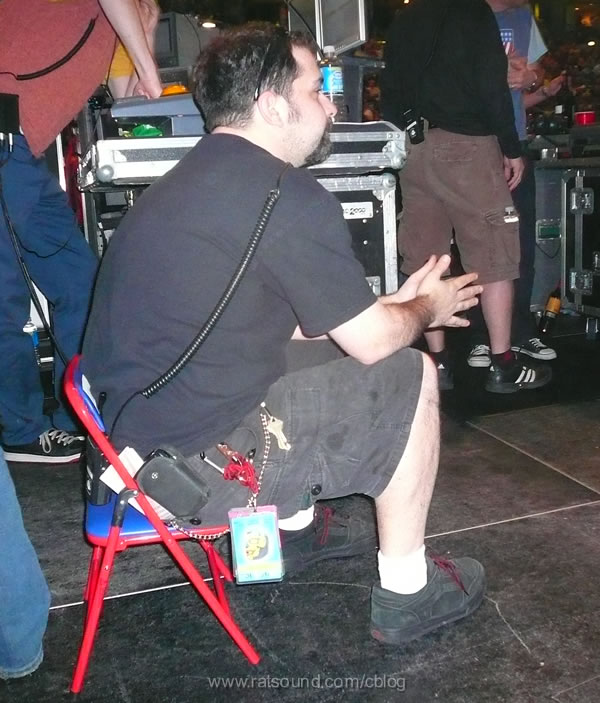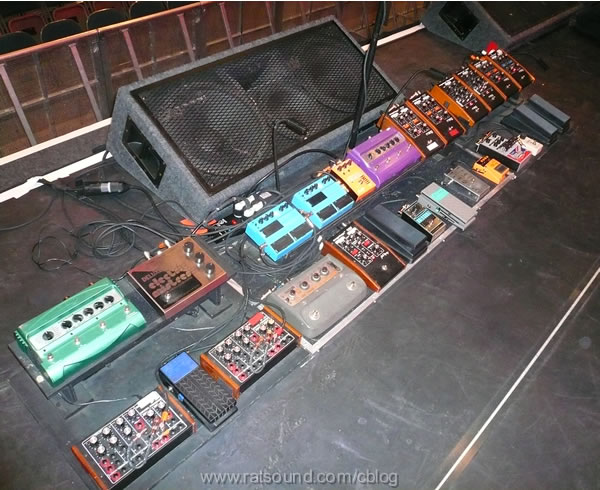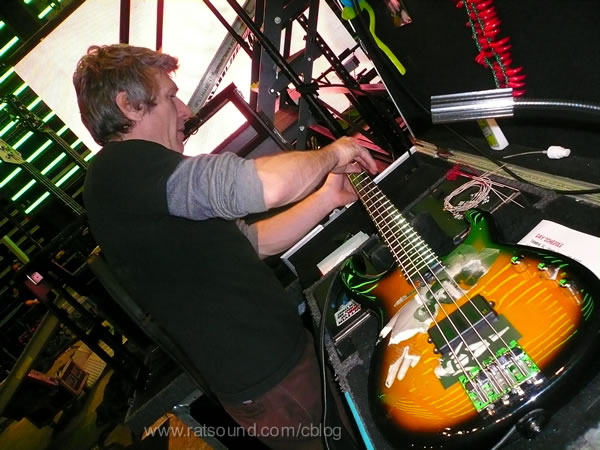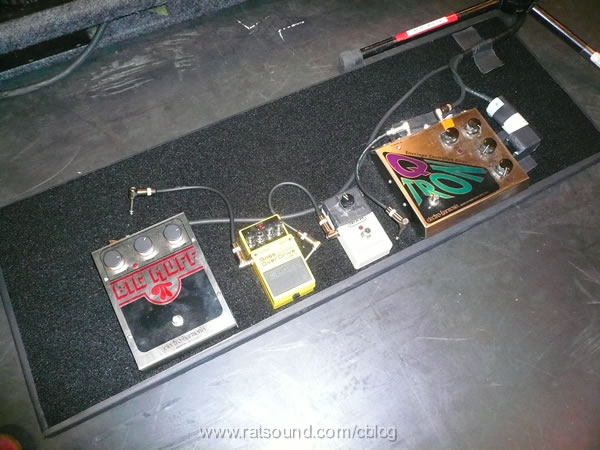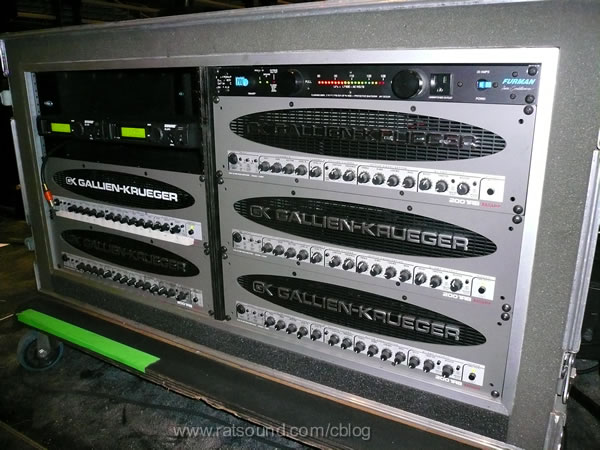Day 252 - Jan 30 - Orlando Show
Inspirations and great ideas can strike at any moment. The key is to act upon them instinctively without hesitation. Fortunately, when the bus pulled over for a late night truck stop and several of us stumbled in, I was clear minded enough in my not so sober haze to follow that instinct and purchase a cowboy hat
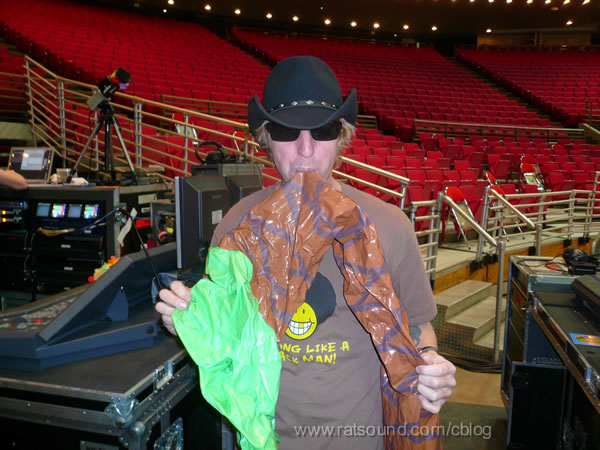
and two large stuffed 'mixing' tigers that make roaring sounds
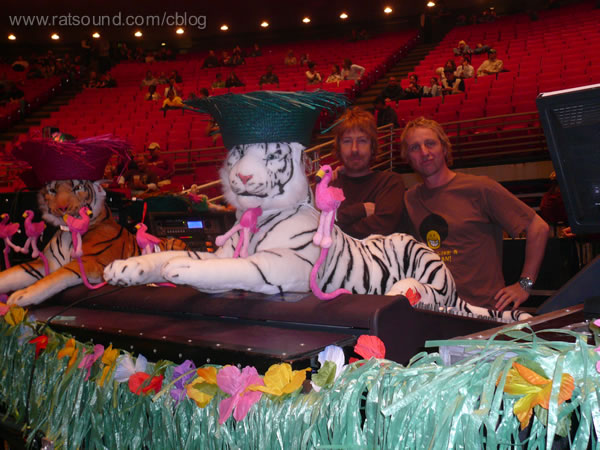
that so graciously rested upon my sound board for the entire show and added a whole new level of depth to our FOH theme.What puzzled me most is wondering how I got on so long without them!
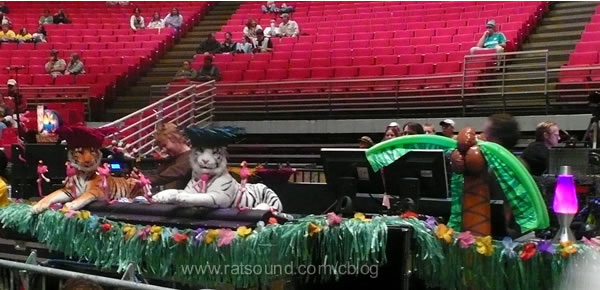
And look, they are are so snuggly curled up in their new home in the case we refer to as "Throwing Hammers"
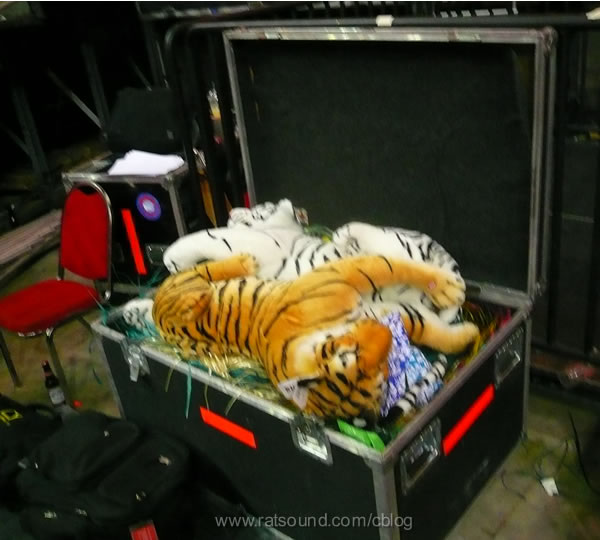
The Florida shows have been really good, awesome crowds and though cold for Florida, the warmer weather is refreshing. I grabbed a show shot as well so you can check out the band rocking as I do each night
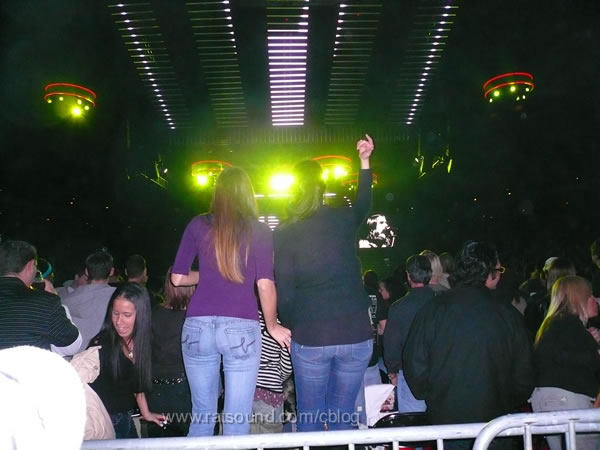
And now for today's installment of....
Dear Ratty!
Hello Dave Rat!
I found your blog this past December during finals week at my college. It became an addiction during study breaks for finals, as I started from the very beginning and worked my way through to the present day (studying was often delayed because I just (*had*) to read one more post!). To say the very least, your blog is awesome.
On the unofficial sound nerd scale, I rank around 2 or 3, on a scale from 1 to 11. I really enjoy reading sound nerd speak, though, even if it is sometimes way over my head.
So, I have been trying to conjure up a good sound nerd question to ask the venerable Dave Rat, and the recent Dear Ratty segments have encouraged me enough to come out of my blog-comment-lurking shell. All righty, here goes nothing:
As a sound person, the most important tools in your toolkit are, most likely, your ears. Also, as a sound person, you do many rock shows each week where you are exposed to high sound pressure levels. However, ears tend to dislike high sound pressure levels, especially for extended periods of time. So, my question is what steps, if any, do you take to protect your hearing?
Sorry for being so long winded,
Rich
Hello Rich,
You bring up a good point and very polarizing subject. In direct answer to your question, what I do to protect my hearing is simply to minimize exposure to loud volumes when I am not mixing. While I am mixing the show though, I feel it is critical that I hear and am exposed to the same volumes and sound that the audience hears so, yes I do get bombarded by multiple shows and a fairly consistent exposure to high volume sound.
Since you brought it up, I will go into a bit more depth on the subject. There are two things that come to mind regarding exposure to rock show volume sound as a sound engineer. First is protection of engineer's hearing because a deaf sound engineers should be, but rarely are, in lower demand. Second is hearing fatigue which causes the engineer's listening perspective to be out of whack with the audience perspective.
As far as protection, there are vastly different ways people look at it. Some people are hyper cautious and freak out about loud sound and perhaps apply the same caution to other aspects of life as well. The "be super careful of everything" angle. Finding that balance between the overly cautious approach witch in my opinion ruins life by immersing the human in boredom and constant fears vs the reckless approach that often leaves a human wishing that more care had been taken to preserve the humanly physical assets like vision, hearing, necks and backs. Some people desire to create rules based on their personal choices and then force those rules on others. My opinion is that each human needs to research and determine the way they wish to live based on how they want to look back on their life when they get older. If you do dumb shit, you then get to pay the price later with back pain or various ailments and whether it is 'dumb' or 'worth it' is determined by whether or not it brings you smiles or regret at a later date.
Actually based on the fact that my exposure to loud music is currently a small fraction of what it once was when I worked for many bands and the levels I mix are lower with Peppers than they were with bands like Rage Against the Machine and I tour much less, what concerns me more is compensating for the effect that multiple shows has on my hearing and not loosing touch with the audience's sonic perspective. I wrote a bit about it here http://www.prosoundweb.com/live/articles/daverat/drifting.shtml if you are curious.
Ratty
Hey Dave,
I was talking to Buford about the advantages of digital snakes on long cable runs. Have you ever considered using one for the Peppers? I know you mix in the analogue domain so yes you would need to convert the signal more times that one would like.. but the high frequency loss on long cable runs can be quite significant, it would be interesting to try out a solution like a digital snake to see what thee results actually sound like with a decent set of converters on each end.
You mentioned you tried mixing the peppers on a digital board at the start of this tour.. did you notice you needed to boost the top end less when mixing through a digital signal path?
All the best,
Danny
Hello Danny,
Buford Jones is an awesome engineer and one that I truly respect and it was great to see him the other day in Nashville. As far as high frequency loss in in long cable runs being significant that may be true but I believe that the words 'long' and 'significant' require further clarification for the statement to have any relevance. Furthermore the audio cable industry has been infiltrated by a plethora of 'snake oil salesmen' so finding accurate info on the subject is difficult. So before seeking a solution, first confirm the problem you are attempting to solve actually exists. My experience is that the hf roll off due to typical audio cable runs is insignificant and easily testable. Just plug three 100 foot mic cords together and A/B the sound to a short mic cord. See if you can actually hear the difference. Try it and I bet the the word 'significant' becomes something more like 'questionably audible.'
As far as having to boost the top end with analog, actually the opposite is true, I typically am rolling off the highs as you can see on the pictures I posted a week or so back of the Meyer CP10 parametric system EQ's.
Now, what is audible to me and clearly so, is the sound of the digital desks that the support acts have been using. Mars Volta was on a Yamaha PM5D, Mike Watt was on a Yamaha MC7L and Gnarls Barkley is on a Digidesign D-Show. So everyday I get to here a digital console plugged into the exact same rig that I mix on, through the same PA system and the support acts have 100% full control without limitations of all of the PA gear. It is not too tough to zero in on to the sound artifacts that are digi console related and are in line with my experience of A/B'ing a Digico D5 to the Midas during pre production. As far as digi snake, we have one with us, the Light Viper that is used for the protools rig is fully set up to be used as a main snake and we can drop the Tonelux mic pre's on stage. When I weigh the potential advantages to be gained vs the non existence of issues at hand and the detriments involved, making the switch to a digi snake into an analog console currently has little desirability.
-- Ratty
Dear Ratty;
How do the versa tubes go into the truck pack? My thought is that the stay in 10 or 16' sections and roll in on set carts, am I close?
Mike
I think they are in 6 or 8 foot sections and yep, they hang in set carts. There is a picture of Rusty I believe near a Versa set cart in the blog somewhere but heck, that may be tough to find in the hundreds of pages. I tried to print out the blog a few weeks ago and stopped after the 400th page spit out and I went through $100 in printer ink cartridges.
--Ratty
Mr Rat,
Thank you for providing all the inside information on what's going on with the tour!
Quick, but curious question, how do you feel about those who may try to record the show...whether by audio or video?
Thanks,
John
I personally am fine with it as long as people are not then reselling or trying to profit from it but that is more of a question for the artists involved. I practice what I preach as well. For example, this blog creation is open and free to share but it would bum me out if someone was attempting to profit by reselling my words or pictures.
Good night and off to Ft. Lauderdale for the last show of the tour leg, hurray and also sad as another adventure comes toward an end.
Dave Rat
Â
